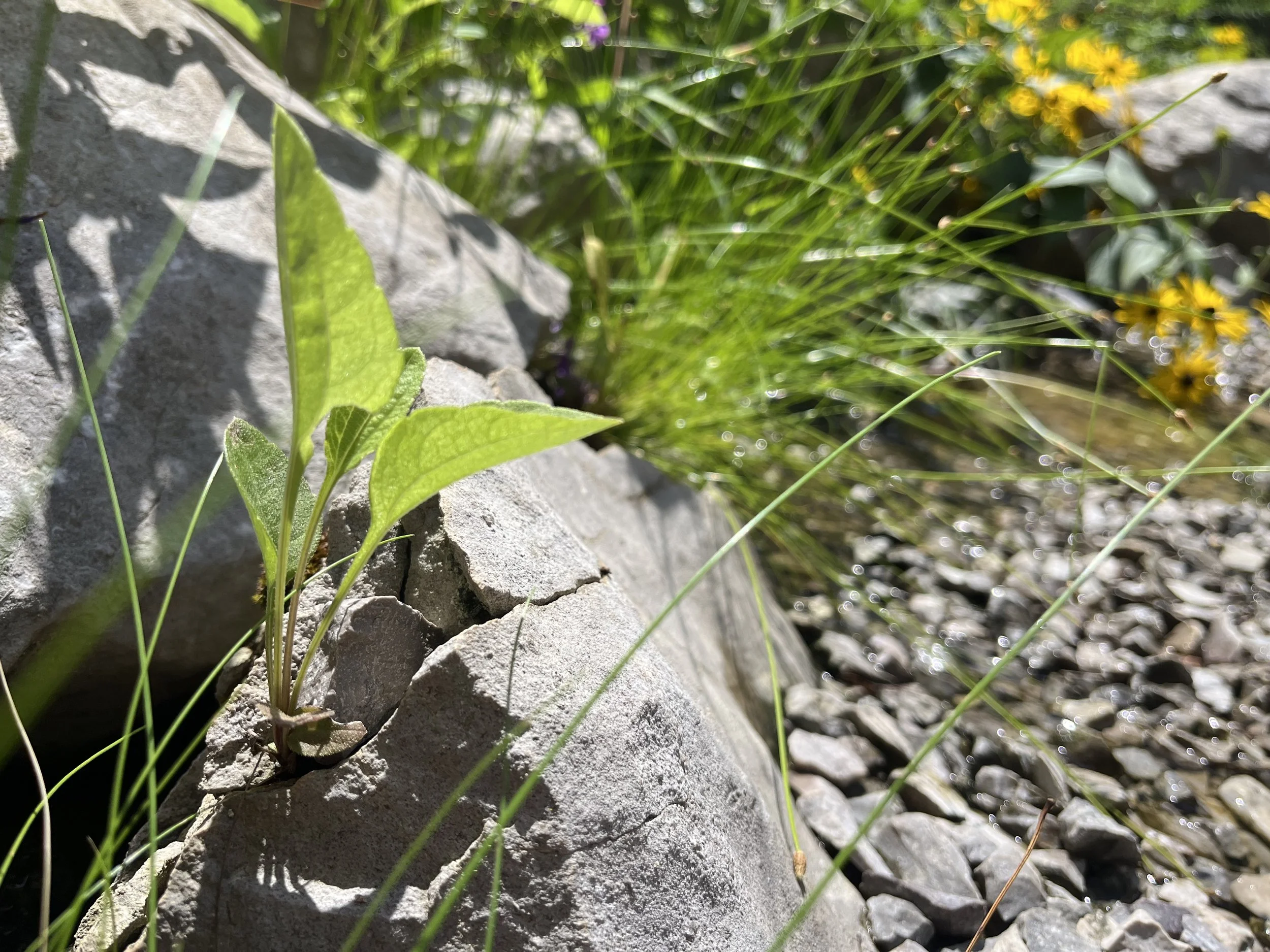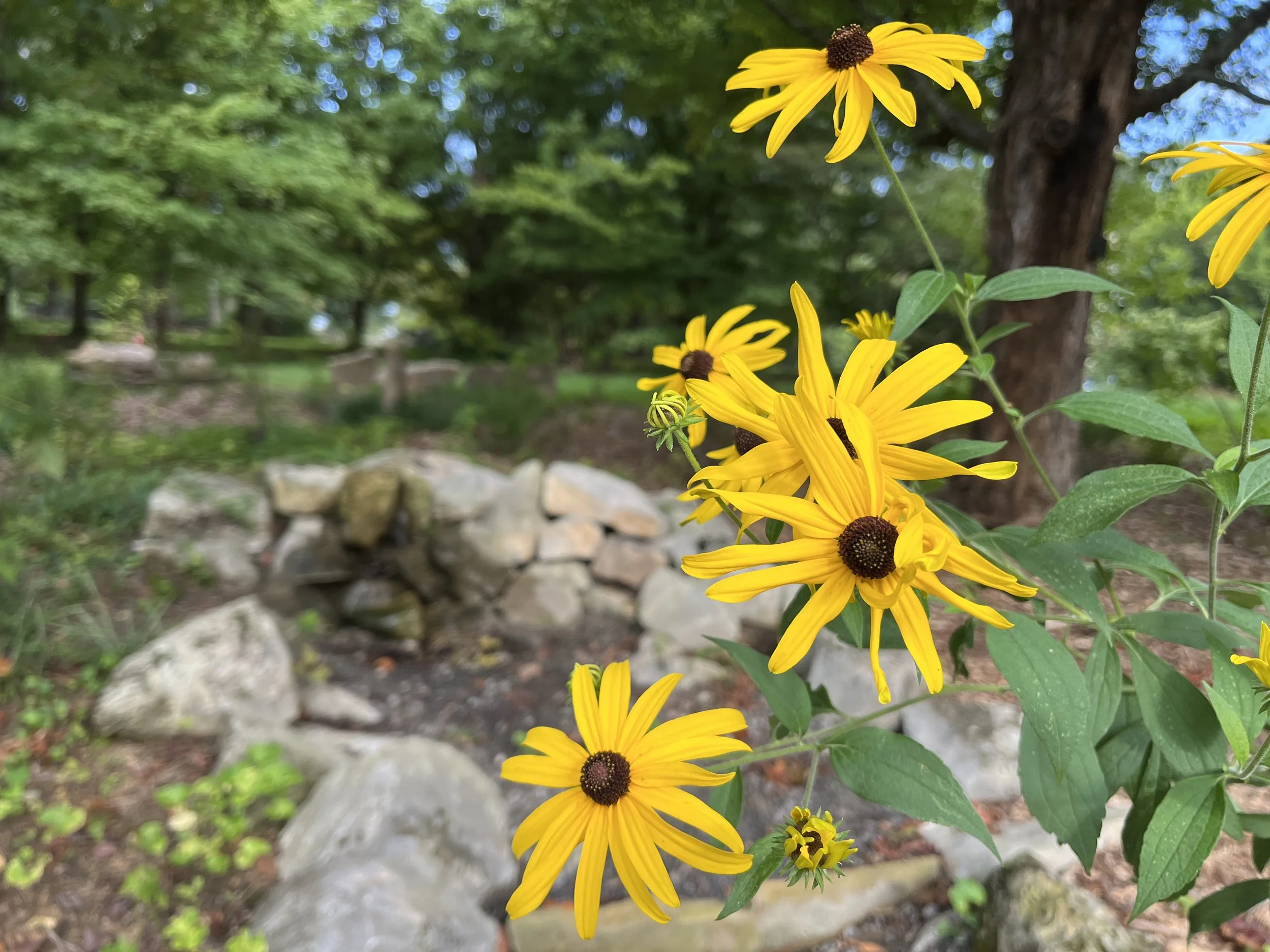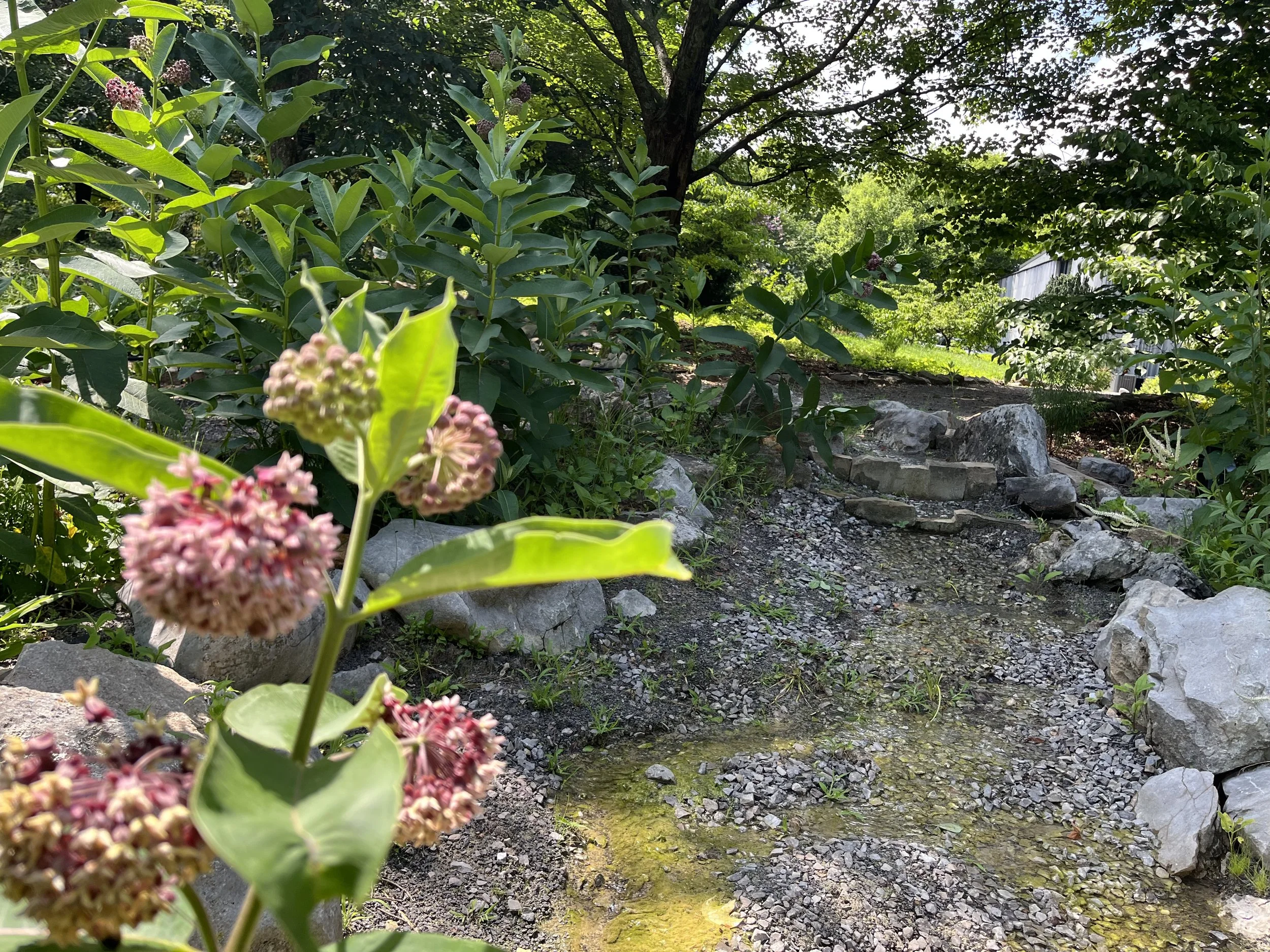
Seep Garden
A seep is similar to a spring or a fen in that it’s a moist environment fed by a flow of fresh water. Seep environments are often rich in biodiversity and represent mini-hot-spots. In 2017, researchers from the University of Tennessee’s Department of Ecology and Evolutionary Biology identified several rare plant species in a newly documented type of local seep, found only in the Powell River drainage and linked to a specific substrate. Many of these plants would be valuable as ornamental landscape plants if they were commercially available, and information from propagation and culture will help inform conservation decisions about them.
In collaboration with University of Tennessee faculty, Dr. Edward Schilling, James (JD) Zimmerman, and Amanda Spangler, Knoxville Botanical Garden and Arboretum has aimed to replicate a seep, highlighting the ornamental value of these native plants, broadening awareness of this special plant environment, and fostering conservation and the use of these species in home landscaping. The garden is designed with a pump element that mimics the flow of water in a natural seep environment. Featured plant species include Trautvetteria fonticalcarea, Hypericum interior, Carex tetanica, Chrysogonum virginianum, Parnassia sp., and Oxypolis rigidior.
About Trautvetteria fonticalcarea
Also known as the Leatherleaf Tassel Rue, Trautvetteria fonticalcarea is a newly identified species endemic to calcareous seepage habitats along the Powell River in Tennessee. This perennial herb grows to 1–2 meters and short, thick rhizomes. Its basal leaves are shallowly three- to five-lobed. The thick leaves are upright and concave. The flowers are bisexual and greenish-white with numerous stamens and pistils. Trautvetteria fonticalcarea is typically found in alkaline springs within the Powell River basin, cohabiting with other rare and state-rare species in small, specialized seep and spring habitats.



